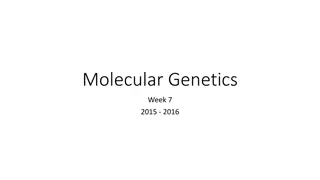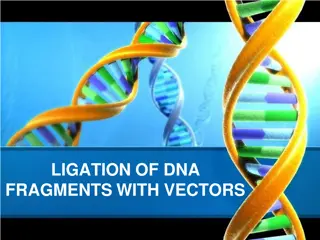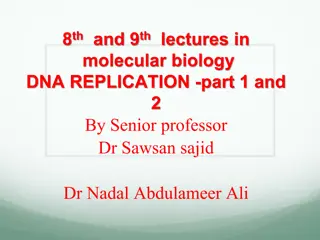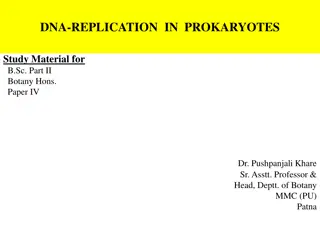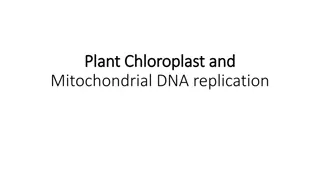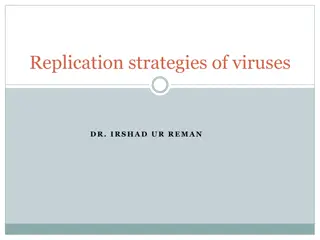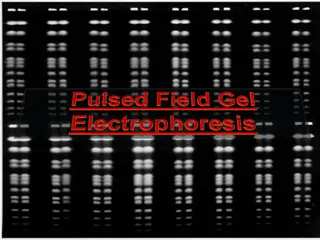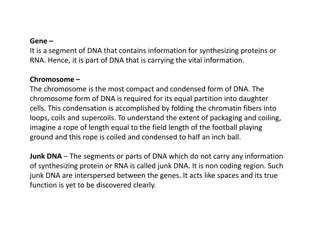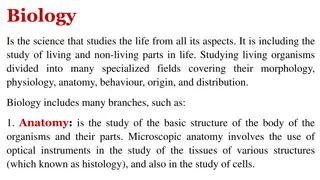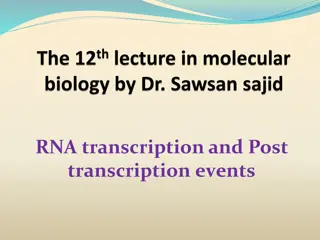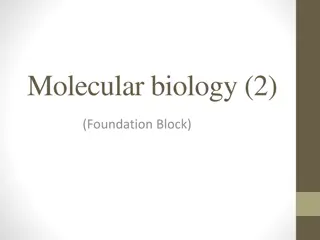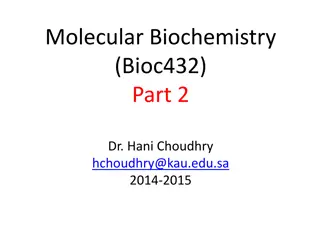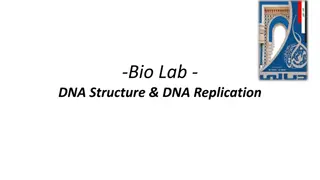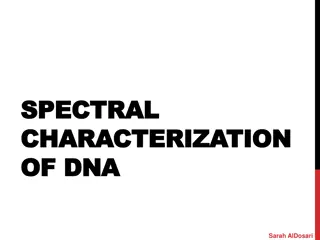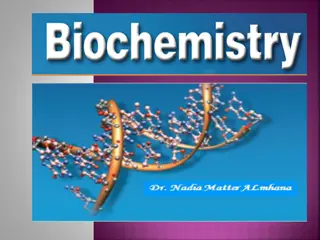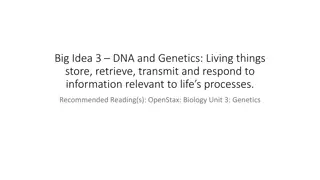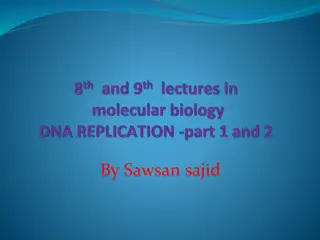
Virtual Science Classrooms and PowerPoint Resources from Science Prof Online
Explore the free science education website, Science Prof Online (SPO), offering fully-developed Virtual Science Classrooms, science-related PowerPoints, articles, and images. Enhance your learning with practice test questions, review materials, lecture PowerPoints, and more. Stay updated on new resources and interactive tools available on SPO.
Download Presentation

Please find below an Image/Link to download the presentation.
The content on the website is provided AS IS for your information and personal use only. It may not be sold, licensed, or shared on other websites without obtaining consent from the author. If you encounter any issues during the download, it is possible that the publisher has removed the file from their server.
You are allowed to download the files provided on this website for personal or commercial use, subject to the condition that they are used lawfully. All files are the property of their respective owners.
The content on the website is provided AS IS for your information and personal use only. It may not be sold, licensed, or shared on other websites without obtaining consent from the author.
E N D
Presentation Transcript
About Science Prof Online PowerPoint Resources Science Prof Online (SPO) is a free science education website that provides fully-developed Virtual Science Classrooms, science-related PowerPoints, articles and images. The site is designed to be a helpful resource for students, educators, and anyone interested in learning about science. The SPO Virtual Classrooms offer many educational resources, including practice test questions, review questions, lecture PowerPoints, video tutorials, sample assignments and course syllabi. New materials are continually being developed, so check back frequently, or follow us on Facebook (Science Prof Online) or Twitter (ScienceProfSPO) for updates. Many SPO PowerPoints are available in a variety of formats, such as fully editable PowerPoint files, as well as uneditable versions in smaller file sizes, such as PowerPoint Shows and Portable Document Format (.pdf), for ease of printing. Images used on this resource, and on the SPO website are, wherever possible, credited and linked to their source. Any words underlined and appearing in blue are links that can be clicked on for more information. PowerPoints must be viewed in slide show mode to use the hyperlinks directly. Several helpful links to fun and interactive learning tools are included throughout the PPT and on the Smart Links slide, near the end of each presentation. You must be in slide show mode to utilize hyperlinks and animations. This digital resource is licensed under Creative Commons Attribution-ShareAlike 3.0: http://creativecommons.org/licenses/by-sa/3.0/ Tami Port, MS Creator of Science Prof Online Chief Executive Nerd Science Prof Online Online Education Resources, LLC info@scienceprofonline.com Alicia Cepaitis, MS Chief Creative Nerd Science Prof Online Online Education Resources, LLC alicia@scienceprofonline.com From the Virtual Cell Biology Classroom on ScienceProfOnline.com Image: Compound microscope objectives, T. Port
Molecular Genetics DNA Replication From the Virtual Cell Biology Classroom on ScienceProfOnline.com Image: Replication Diagram: Madprime
Everyday Biology How do bacteria become resistant to antibiotics? Genes for antibiotic resistance arise through DNA mutations(mistakes when copying DNA). These resistance genes spread as resistant bacteria multiply and through horizontal gene transfer. Q: How would overuse and incorrect use of antibiotics contribute to antibiotic resistance in bacteria? Images: Drug resistance, NIAID; Binary Fission, JW Schmidt; Bacterial conjugation by Adenosine From the Virtual Cell Biology Classroom on ScienceProfOnline.com
Prokaryotic Genomes Made of DNA Chromosomes can be circular or linear Genome floats freely within cytoplasm Q: Where is DNA found in prokaryotes? ______________ ______________ From the Virtual Cell Biology Classroom on ScienceProfOnline.com Image: Prokaryotic Cell Diagram: Mariana Ruiz
Eukaryotic Genomes Genomes of eukaryotic organisms made of DNA. Eukaryotic genomes frequently include many linear chromosomes within a membrane-bound nucleus (Q: How many do we have?). Where is DNA found in eukaryotes? Nuclear DNA Extranuclear DNA (Q: What is extranuclear DNA?) From the Virtual Cell Biology Classroom on ScienceProfOnline.com Image: Eukaryotic Cell Diagram, Mariana Ruiz
Chromosomes & Genes Genome - Complete complement of an organism s DNA. Cellular DNA is organized in chromosomes. Genes have specific places on chromosomes. Image: Chromosome & gene, Graham Colm, National Human Genome Research Institute From the Virtual Cell Biology Classroom on ScienceProfOnline.com
Nucleotides and Nucleic Acids Image: DNA Detail Diagram: Madprime From the Virtual Cell Biology Classroom on ScienceProfOnline.com
Nucleic Acids Q: What type of monomer are nucleic acids made of? Image:Nucleotides.png Image: Nucleotide Structure, Wikipedia From the Virtual Cell Biology Classroom on ScienceProfOnline.com
DNA Structure Double stranded molecule, analogous to a spiral staircase: - two deoxyribose-phosphate chains as the side rails - base pairs, linked by hydrogen bonds, are the steps (double ring) Adenine & Guanine Purine Bases Pyrimidine Bases (single ring) Cytosine & Thymine Images: Model of DNA Molecule, Field Museum, Chicago, T. Port; DNA Detail Diagram: Madprime; DNA Molecule, Biology Corner From the Virtual Cell Biology Classroom on ScienceProfOnline.com
From the Virtual Cell Biology Classroom on ScienceProfOnline.com Image: DNA molecule, Why Files, NSF
DNA Replication Copying of a double-stranded DNA molecule. Each DNA strand holds the same genetic information, so each strand can serve as a template for the new, opposite strand. The parent (a.k.a. __________ ) strand is preserved and the daughter (a.k.a. ___________) strand is assembled from nucleotides. This is called semi-conservative replication. Resulting double-stranded DNA molecules are identical. Q: Why would a cell need to copy its DNA? Image: Replication Diagram: Madprime, Wiki From the Virtual Cell Biology Classroom on ScienceProfOnline.com
DNA Replication In a cell, DNA replication must happen before cell division. Prokaryotes replicate their DNA throughout the interval between cell divisions. In eukaryotes, timing of replication is highly regulated. Image: Prokaryotic Cell Diagram & Eukaryotic Cell Diagram, Mariana Ruiz From the Virtual Cell Biology Classroom on ScienceProfOnline.com
DNA Replication Image: Types of Cell Division, Saperaud Wiki From the Virtual Cell Biology Classroom on ScienceProfOnline.com
EUKARYOTIC DNA Replication: Replication Bubbles Multiple origins of replication > These bubbles are the start points of replication. Replication fork: Y -shaped region where new strands of DNA are elongating. Image: Eukaryotic Cell Diagram, Mariana Ruiz; Replication Bubbles Boumphreyfr, Wiki From the Virtual Cell Biology Classroom on ScienceProfOnline.com
PROKARYOTIC DNA Replication One Origin Prokaryotic DNA is arranged in a circular shape, and there is only one replication origin. Despite these differences, the underlying process of replication is the same for both prokaryotic and eukaryotic DNA. Image: Prokaryotic Replication, U.S. National Library of Medicine From the Virtual Cell Biology Classroom on ScienceProfOnline.com
How Do Nucleotides Put Themselves Together Into Nucleic Acids? An anabolic polymerization process. Q:Anabolic or Anabolism is .? _______________________ Q:Polymerization is ? ____________________________ Polymerization requires monomers(building blocks) and energy. - Triphosphate deoxyribonucleotides provide both. - These building blocks of DNA bring their own energy for polymerization. From the Virtual Cell Biology Classroom on ScienceProfOnline.com Image: Replication Diagram: Madprime, Wiki
DNA Replication:Anti-parallel Nature of DNA Sugar/phosphate backbone runs in opposite directions. One strand runs 5 to 3 , while the other runs 3 to 5 . DNA polymerase: enzyme that facilitates addition of nucleotides in building the new DNA strand. Can only adds nucleotides at the free 3 end. Q: Why is this important? Image: DNA Detail Diagram: Madprime From the Virtual Cell Biology Classroom on ScienceProfOnline.com
DNA Replication:Leading & Lagging Strand Leading Strand Synthesis proceeds smoothly as the replication fork unzips. Lagging Strand Synthesis away from the replication fork (Okazaki fragments); joined by DNA ligase. REVIEW DNA Replication Animations from McGraw-Hill This link will take you to a page with 4 links on it. Please view the first, How Nucleotides are Added in DNA Replication and the fourth DNA Replication Fork . From the Virtual Cell Biology Classroom on ScienceProfOnline.com Replication Fork Diagram: Mariana Ruiz
Lets Practice How Leading & Lagging Daughter Strands Are Built Within the Replication Bubble ? ? 5 ? RNA Primers ? ? ? ? Replication Fork Replication Fork Now lets look at how replication of the leading and lagging strands occurs at each of the two replication forks within the replication bubble: 1. Label each end of the parent strands as either 5 or 3 . 2. Start a RNA primer for each daughter strand and label its 5 and 3 ends. 3. Show how new strands are built (continuously or discontinuously). From the Virtual Cell Biology Classroom on ScienceProfOnline.com
ReminderWhy is the DNA copied? Replication occurs prior to cell division, because the new, daughter cell will also need a complete copy of cellular DNA. Image: Types of Cell Division, Saperaud Wiki From the Virtual Cell Biology Classroom on ScienceProfOnline.com
Genetic Diversity in Prokaryotes then: If binary fission createsclones Why isn t there just one type of bacteria? How do bacteria change (for example develop resistance to antibiotics)? From the Virtual Cell Biology Classroom on ScienceProfOnline.com Images: Binary Fission, JW Schmidt
Replication Mistakes: Mutations of Genes Change in the nucleotide base sequence of a genome; rare. Almost always bad news, but... Rarely leads to a protein having a novel property that improves ability of organism and its descendants to survive and reproduce. From the Virtual Cell Biology Classroom on ScienceProfOnline.com Images: Blinky & Bart, Matt Groening
Mutation and Bacterial Change _________ __________= When a microorganism is able to survive exposure to an antibiotic. Genetic mutation in bacteria can produce resistance to antimicrobial drugs (example: beta-lactamase). REVIEW! Antibiotic Resistance Animation from Sumanas If those genes are on a plasmid, they can be transferred between bacteria by conjugation and other forms of horizontal gene transfer. If a bacterium carries several resistance genes, it is called multidrug resistant (MDR) or, informally, a superbug or super bacterium. Any use of antibiotics can increase selective pressure in a population of bacteria to allow the resistant bacteria to thrive and the susceptible bacteria to die off. From the Virtual Cell Biology Classroom on ScienceProfOnline.com Image: Staphylococcus aureus on antibiotic test plate, PHIL #2641
Confused? Here are links to fun resources that further explain genetic replication: Smart Links Molecular Genetics: Replication Main Pageon the Virtual Cell Biology Classroom ofScience Prof Online. That Spells DNA song by Jonathan Coulton. DNA Structure Cell Biology Animation from John Kyrk. Build a DNA Molecule from University of Utah. DNA Replication animation and review questions. Bio Rad GTCA Song musical advertisement for SsoFast . animation by John Kyrk. She Blinded Me With Science music video Thomas Dolby. (You must be in PPT slideshow view to click on links.) From the Virtual Cell Biology Classroom on ScienceProfOnline.com
Are you feeling blinded by science? Do yourself a favor. Use the Virtual Cell Biology Classroom (VCBC)! The VCBC is full of resources to help you succeed, including: practice test questions review questions study guides and learning objectives PowerPoints on other topics You can access the Virtual Cell Biology Classroom by going to the Science Prof Online website www.ScienceProfOnline.com Images: Blinded With Science album, Thomas Dolby; Endomembrane system, Mariana Ruiz, Wiki



